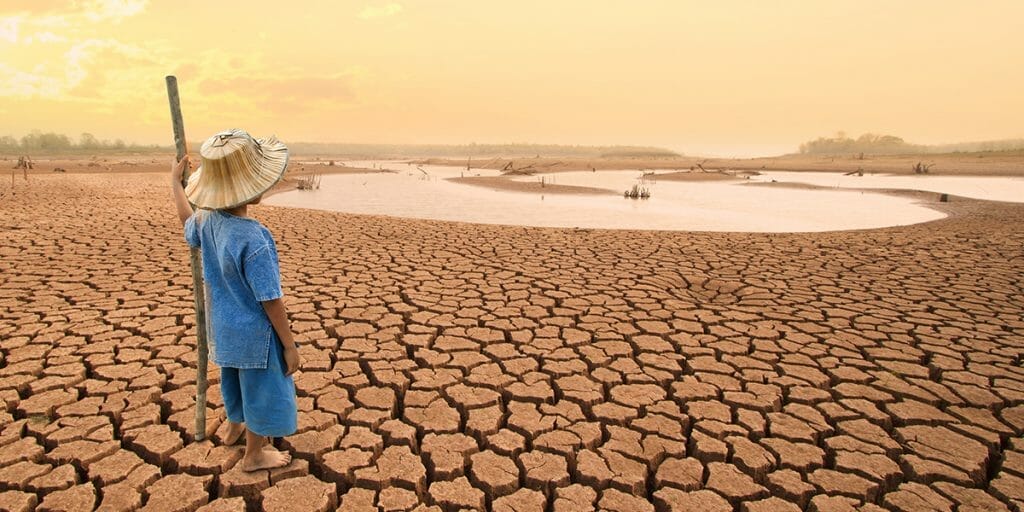
As circumstances have demanded, the attention of our health-related recommendations over the last few months has been on the role of lifestyle and environmental impacts on immunity and the ability to resist or respond to viral infections, especially Sars-Cov-2.
The focus, prior to Covid-19 was on non-communicable diseases and the related slower, but equally damaging effects on human health and wellbeing. Whilst infectious risks have obviously been highlighted, at present, one of the most significant discussions among scientists worldwide is the interdependency of escalating environmental risk factors and the increasing rates of noncommunicable diseases (NCDs), which are the leading cause of death and disability worldwide[1].
Environmental Risk Factors
Climate change triggers the occurrence of NCDs through a variety of direct and indirect pathways[2]. Therefore, it is likely that the interdependence of climate change, environmental risk factors, and NCDs poses a great threat to global health. Thinking about this in a systematic manner allows for solutions and practical approaches that result in enhancements across all aspects.
Environmental changes have direct and indirect impacts on human health, account for a significant burden of disease, and are exacerbating environmental and climate-sensitive health risks and diseases. It is estimated that 23% of the global deaths in the year 2012 were caused due to environmental risk factors, amounting to 12.6 million deaths[3].
Environmental risk factors are defined as a congregation of all the physical, chemical, and biological factors external to a person, and all related behaviours, but excluding those natural environments that cannot reasonably be modified. The risk factors bridging the way from climate change to NCDs include air pollution, extreme temperature, alteration in food systems, increased ozone production in the troposphere, increased wildfires, alteration of ambient ultraviolet radiation, increased pests and weeds, extreme weather, and rise in sea levels [4].
Many of the risk factors were set out by one of the environment’s greatest communicators, Rachel Carson, in her book Silent Spring, building on the remarkable work of an even earlier environmental champion Alexander Von Humboldt. Humboldt anticipated Charles Darwin’s famous idea of an entangled bank of connections in the web of life, and also recognised that organisms have a reciprocal effect on their environment. For example, in the shade provided by trees, or the stabilising effects of vegetation on soil[5]. Carson admonished against the “fragmentation, commodification, and downright erasure of truth in an era when narrow silos blind specialists to the interconnected whole and market forces sacrifice truth on the altar of revenue”. Something we continue to witness, at the cost of the environment and ultimately humanity. Indeed, the current Sars-Cov-2 experience can be linked to the transmission of a zoonotic pathogen driven by human and environmental interaction and is highly likely not to be the only such event we need to plan for[6]. Today, up to 75% of all new infectious human diseases are zoonotic, and most originate in the tropics [7],[8].
Nutrition
 The global dietary transition has been under way for several decades[9]. It is characterised by the consumption of energy-dense, less diverse, and increasingly hyper processed foods, including animal products, oils and fats, refined carbohydrates, and sugar-sweetened beverages, and by behavioural changes such as increased snacking and increased eating outside the home. The UK has recently published its National Food Strategy that seeks to change attitudes to food, lifestyle and the interconnection between out natural resources, their extraction and the development of non-communicable diseases. For these conditions, often referred to as co-morbidities in relation to Covid-19 infection, not only reduce quality of life, but have been a significant risk factor in the associated quantity of life also[10].
The global dietary transition has been under way for several decades[9]. It is characterised by the consumption of energy-dense, less diverse, and increasingly hyper processed foods, including animal products, oils and fats, refined carbohydrates, and sugar-sweetened beverages, and by behavioural changes such as increased snacking and increased eating outside the home. The UK has recently published its National Food Strategy that seeks to change attitudes to food, lifestyle and the interconnection between out natural resources, their extraction and the development of non-communicable diseases. For these conditions, often referred to as co-morbidities in relation to Covid-19 infection, not only reduce quality of life, but have been a significant risk factor in the associated quantity of life also[10].
Action Steps
As humans we have absurdly short lives. Those of us fortunate enough to live until 80 will have about 4,000 weeks alive only. What distinguishes us from other apes is perhaps not language or the length of our opposable thumbs but the capacity to make ambitious plans that we will have heartbreakingly little time to fulfil. Time is precious, using it well will ensure the ability to action change to better our own life, as well as that of our environment and by circumstance, others.
Altruism can genuinely be found in the act of individual change, and whilst the events of our planet can seem overwhelming, food choice is a key component that impacts risk of NCDs, infectious diseases and environmental sustainability. Every morsel of food from every plate, bowl and cooking pot around the world takes a small bite from Earth’s resources[11]. The human diet places a strain on the environment, water resources, biodiversity and just about every other measure of planetary health as well as our own. The mission going forward is to drive food selection and food production, to increase sustainable supply, enhance nutritional content as well as yield and favour a health generating food selection. Economic and financial capital is already flowing to innovative food production systems. Our job is to translate the public policies into individual care[12]. Paul Hawken wrote his book Drawdown in 2017 and a suite of open-source resources on Drawdown.org. and has just issued a new publication called “Farming Our Way Out of the Climate Crisis. Both are worth reading and passing on to family and friends.
References
[1] Dhimal, M., Neupane, T. and Lamichhane Dhimal, M. (2021), Understanding linkages between environmental risk factors and noncommunicable diseases—A review. FASEB BioAdvances, 3: 287-294.
[2] Frumkin H, Haines A. Global Environmental Change and Noncommunicable Disease Risks. Annu Rev Public Health. 2019 Apr 1;40:261-282. doi: 10.1146/annurev-publhealth-040218-043706. Epub 2019 Jan 11.
[3] Prüss-Ustün A, Wolf J, Corvalán C, Bos R, Neira M. Preventing disease through healthy environments: A global assessment of the burden of disease from environmental risks. Geneva: World Health Organization (WHO); 2016.
[4] Colagiuri R, Boylan S, Morrice E. Research priorities for NCD prevention and climate change: An international Delphi survey. International journal of environmental research and public health. 2015;12(10):12941-12957.
[5] https://www.nature.com/articles/s41559-019-0980-5 accessed 23.8.21
[6] Haider N, Rothman-Ostrow P, Osman AY, Arruda LB, Macfarlane-Berry L, Elton L, Thomason MJ, Yeboah-Manu D, Ansumana R, Kapata N, Mboera L, Rushton J, McHugh TD, Heymann DL, Zumla A and Kock RA (2020) COVID-19—Zoonosis or Emerging Infectious Disease? Front. Public Health 8:596944
[7] https://www.unep.org/resources/frontiers-2016-emerging-issues-environmental-concern accessed 23.8.21
[8] https://deohs.washington.edu/cohr/zoonotic-infectious-disease accessed 23.8.2021
[9] Popkin BM, Adair LS, Ng SW. 2012. Global nutrition transition: the pandemic of obesity in developing countries. Nutr. Rev. 70: 3–21
[10] Gasmi A, Peana M, Pivina L, Srinath S, Gasmi Benahmed A, Semenova Y, Menzel A, Dadar M, Bjørklund G. Interrelations between COVID-19 and other disorders. Clin Immunol. 2021 Mar;224:108651. doi: 10.1016/j.clim.2020.108651. Epub 2020 Dec 14.
[11] Nature Outlook, Sustainable Nutrition 09.12.2021 https://www.nature.com/collections/fibbgbiebc
[12] https://www.edibleplanetventures.com/summit accessed 23.8.21
